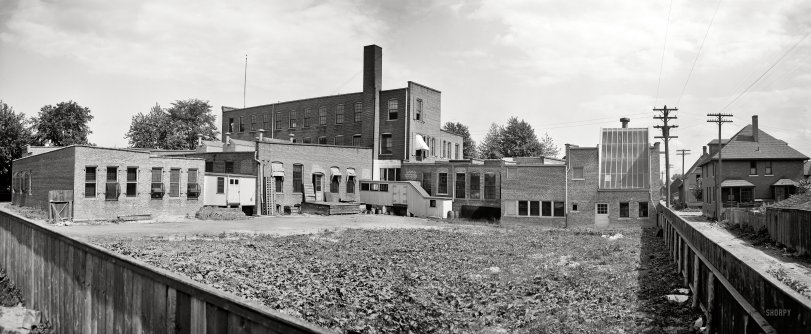


Framed or unframed, desk size to sofa size, printed by us in Arizona and Alabama since 2007. Explore now.
Shorpy is funded by you. Patreon contributors get an ad-free experience.
Learn more.

- Lofty addition
- In 1912
- Keenan Building
- Six years old
- Taken from the P.J. McArdle Roadway?
- It stood only 47 years
- Three track mind
- Incline to the right
- Reach for the sky, 1912 style
- No clean sweep
- Same Job Title, Same Face
- Sadly Lost
- Beautiful ...
- Where you get your kicks
- Aim High
- Pueblo Revival sisters
- Pueblo Neoclassicism
- Milk Man
- Regional dialect.
- Spielberg's inspiration
- Great Photo
- Loaf Story
- Do you still have the Rakes category?
- Could almost be a scene from the 1957 movie 'Hell Drivers'
- The Wages of Fear.
- Conspicuous by their absence
- Got Milk?
- All that aluminum
- No lefties
- Smoke 'em if you've got 'em
Print Emporium
Sun-Catcher: 1906

Detroit circa 1906. "Detroit Publishing Co., northwest view." Note the greenhouse-style glass to the right employing sunlight for printing and perhaps enlargement, as well as the unusual windows to the left. In the early years of the 20th century, the company was one of the world's biggest producers of color postcards. Panorama made from two 8x10 inch glass negatives. View full size.
Windows and screens
Just a look at the windows and the screens: the windows look like they're using the sun to aid in the drying of some sort of print. The screens look like ventilation screens, the windows just used as a means of controlling the flow of fresh air in and contaminated air out.
Panorama
If that was two plates stitched together, I can't see the join! For pre-PhotoShop days that's excellent work.
[The plates in these panoramas are joined by me, using Photoshop. - Dave]
Cages on the windows on left
I've seen these before on an old abandoned sanitarium/state hospital building somewhere that also used center pivot sash windows (note the single and double tier types). The mesh was too coarse to be an insect screen, which led me to think it was intended to keep inmates in and/or birds out in that case.
Wires from the sky
It appears DPC had a heavenly power supply emerging from the clouds just to the right of the chimney. I wonder where these wires connect.
[They were retouched out of existence on the glass plate, with some further help from me. - Dave]
Ah!
I collect vintage and antique postcards (mostly white-border linens). Nice to see where a bunch of them were birthed!
Large glass area on the right
Just a guess; but would think that area is a "natural light" portrait studio. Have seen similar things years ago.
[Detroit Publishing's business was in scenics and landscapes; natural light was used most likely for contact prints and enlargements. -Dave]
Pivot screens
There are two ways to install a screen on a pivoted window. The first is to attach half of the screen on the outside and the other half on the inside, such that when the window is pivoted open, it closes against the two screens and insects are kept outside. This method has the advantage of being flush with the window and wall. The second method is to install a screen cage around the outside of the window(s) - and this is what we seem to have on the left side of the photo. The screened windows facing the photographer have one screen per window, while the windows on the left side of the building have one screen per pair of windows. If they'd just hurry up and invent air conditioning, they wouldn't need these sorts of contraptions.
























On Shorpy:
Today’s Top 5